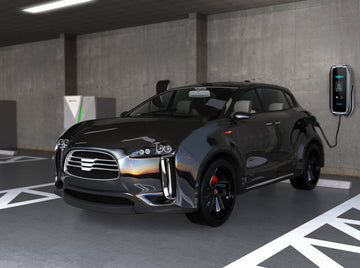
Charging speed is a crucial consideration for electric vehicle (EV) owners, as it determines how quickly your EV can be ready for the road. Several factors influence this, including the battery capacity of the vehicle, the maximum charging power it can handle, the output power of the charging station, the state of charge before plugging in, the charging curve specific to DC fast charging, and even weather conditions. Understanding these elements helps optimize your EV charging experience.
Factors Affecting Charging Speed
Charging an electric vehicle (EV) involves more than simply plugging it in and waiting. Several factors influence how quickly an EV battery can recharge, and understanding these variables can help you optimize your charging strategy. Key aspects include the battery capacity, the vehicle's maximum charging power, the output power of the charging station, the remaining battery capacity, the charging curve, and weather conditions. Let's dive deeper into each of these factors.
Electric Vehicle Battery Capacity
The size of your EV's battery is a fundamental determinant of charging time. Measured in kilowatt-hours (kWh), battery capacity dictates how much energy your vehicle can store. The larger the battery, the longer it will take to charge. Modern electric passenger cars typically have battery capacities ranging from 25 to 100 kWh. For instance, a vehicle with a 100 kWh battery will naturally take longer to reach a full charge than one with a 25 kWh battery, assuming the same charging speed.
Maximum EV Charging Power the Vehicle Can Handle
Each EV has a maximum charging power it can accept, which varies by make and model. This charging power, measured in kilowatts (kW), plays a crucial role in determining how fast your vehicle charges. For example, if you have two EVs with similar battery capacities but different maximum charging powers, they will charge at different rates. An EV that can handle 250 kW of DC power will charge significantly faster than one that only accepts 50 kW. This is particularly important when using high-power DC fast chargers, also known as Level 3 chargers.
Maximum Output Power of Charging Stations
The charging station's output power is another critical factor. There are different types of chargers available for home and public use, such as Level 1, Level 2, and DC fast chargers. For home use, the fastest option is typically a Level 2 EV charger. These chargers operate at 240 volts and can deliver a range of amperage, commonly from 16 to 80 amps. For example, an EV wall charger with a higher amperage rating, like 48 amps, will charge your vehicle faster than one with a lower amperage rating.
Portable EV charger also comes into play here, offering flexibility but usually at lower power outputs compared to wall-mounted options. The output power of these charging stations directly affects how quickly your EV can be recharged.
Remaining Battery Capacity Before Charging
The state of charge of your EV's battery when you begin charging also impacts the time it takes to reach full capacity. If the battery is nearly full, the charging process will be quicker compared to starting with a nearly empty battery. For instance, topping off a battery from 80% to 100% might only take ten minutes, whereas charging from 20% to 100% could take considerably longer. This is akin to refueling a conventional car; the time needed depends on how full the tank is when you start.
DC Charging Curve
DC fast charging, or Level 3 charging, follows a different charging curve compared to AC charging. When using DC fast chargers, the power flow to the EV's battery is initially high and then gradually decreases as the battery approaches full capacity. This tapering effect helps protect the battery from damage due to a sudden surge of electricity. As a result, the first 80% of charging happens relatively quickly, while the final 20% takes longer.
Weather Conditions
Weather can also significantly affect charging speed. Batteries are less efficient in extreme temperatures, whether hot or cold. Ideal charging conditions typically fall within a temperature range of 68°F to 77°F (20°C to 25°C). In colder weather, batteries can become sluggish, resulting in longer charging times. Conversely, extremely hot weather can also slow down the charging process as the battery management system works to prevent overheating.
Selecting the Fastest Home EV Charger
Choosing the fastest home EV charger involves considering the factors mentioned above and matching them to your specific needs. A Level 2 EV charger with a high amperage rating is generally the best option for home use. For example, a 48-amp EV wall charger can provide faster charging times compared to lower amperage options.
Portable EVCS is also a viable option for those needing flexibility, though they might not offer the same speed as a fixed wall charger. Regardless of your choice, ensure your home electrical system can support the charger’s requirements, and always consult a qualified electrician if you’re unsure.
Charge Smarter, Not Harder
Lastly, the speed at which your EV charges depends on several interconnected factors, including battery capacity, the maximum charging power your vehicle can handle, the output power of the charging station, the remaining battery capacity, the charging curve of DC fast chargers, and weather conditions. By understanding these factors, you can make informed decisions about your charging setup and practices, ensuring your EV is ready to go when you are. Whether opting for a Level 2 EV charger, a portable EV charger, or the fastest home EV charger you can find, considering these elements will help optimize your EV charging experience.



